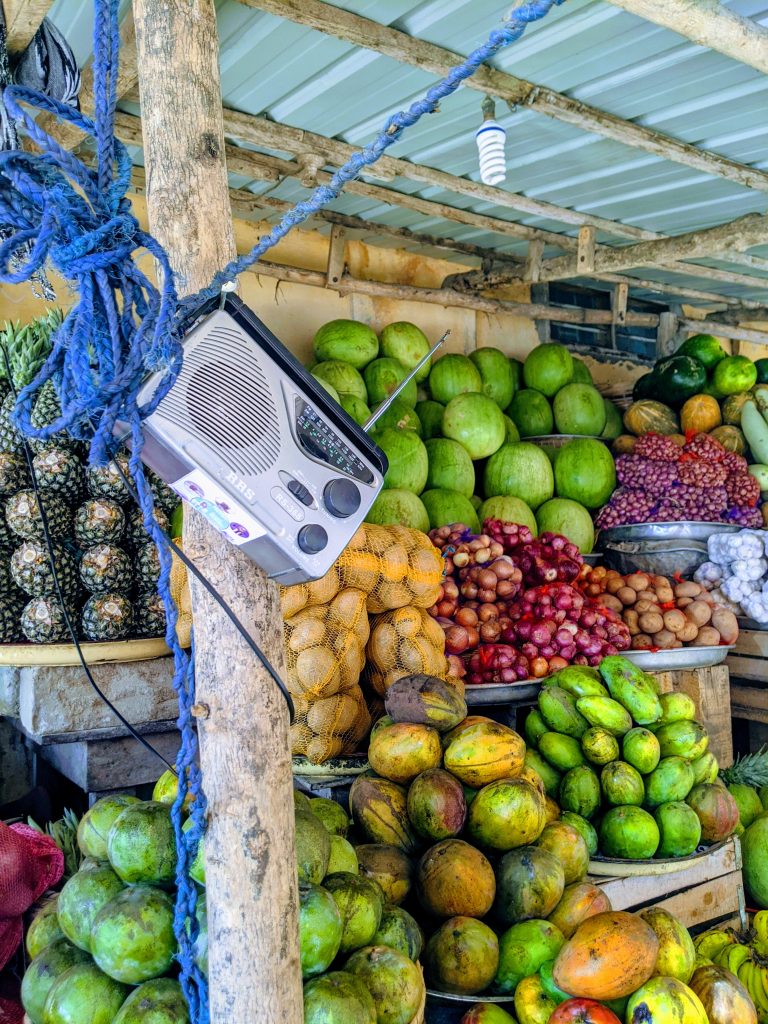Across Africa, even in cities with relatively modern infrastructure, many shoppers prefer the informal markets. In our case, both our mothers preferred the fresh produce sold at informal markets by women from the rural areas.
Thus, in cities as far apart as Nairobi and Abidjan, our mothers took us to buy fruits and vegetables sold by women entrepreneurs in the muddy corners of our neighbourhoods or at the vendors along main roads.
Reminiscing about these weekly visits to the local food market reminded us of the importance of informal traders in our food system. Most of these traders are women. In Abidjan, for example, the “Marché Gouro” run by women controls 97.5 percent of the fresh food supply and in Kenya women make up 80% of all farmers.The merging of formal and informal markets has worked well in places such as the famous street markets of London or the souks of Marrakech. At a policy level, African governments can build a stronger relationship with informal entrepreneurs to learn from their skills, community engagement and spatial need
As adults, we still frequent the market. The modern indoor supermarkets and malls had most of what we were looking for but lack character and the animated bargaining conversations with the women traders we grew up with.
This holds true for most African countries where the vast majority of consumer spending is in the informal sector even where formal retail markets are well developed.
The informal transactions have an important element of trust – traders often give an extra banana to top up the purchase or simply add another fruit to test for taste. Through these market experiences, we were able to reconnect to our mothers upbringing in rural areas.
Traditionally, the market was the heart of the village and was often surrounded by important community buildings such as the chief’s camp, the healer’s hut, places of worship and even schools.
The design of these traditional bazaar-like markets with small moveable stalls; considered the social nature of both the buyer and seller. This enabled informal interactions that created a bond of trust that made our mothers and now us retain our connection to the women in the farms where the food comes from.
In the modern city, the market is still the centre for trade, and social activities. In Kenya, the informal market accounts for 82% of the retail market sector with the formal markets only capturing 18%.
Unfortunately, open-air markets, where most people buy their food, are increasingly being closed by governments to stop the spread of the coronavirus, leaving, millions across the continent jobless.
Yet, the inherent design of the open-air market is actually the safest way to shop. With proper sanitation methods in place, the natural ventilation and a buyers access to a multitude of shops these markets are safer than indoor malls.
Africa’s population is expected to reach 2.5 billion by 2050, including 60% living in cities. Transforming the market is investing in the 85.8 percent of Africans generating their income in the informal economy. Moreover, improving market access for the women growing 70 percent of Africa’s food.
Yet, despite the rapidly urbanising centres, the working conditions of informal vendors have not improved over time. Now, however, rebuilding after the coronavirus pandemic is a catalyst to redesign our markets with women at the centre.
In Africa, this means embracing the “Soko stall” for both informal and formal markets. We can learn from the food courts and hawkers in Singapore as well as the design of the Souk in Abu Dhabi Central Market combining traditional and modern architecture.
The traditional bazaar structures have character and most importantly are simple and portable. This allows users to move around the city for ease of market access. It is also more equitable as rents and permanent stalls require high monthly costs.
The urban market with social distancing restrictions will take up more space, we can use the space no longer being taken up by cars, such as quiet streets and parking lots to make temporary space for informal vendors. Thus offering citizens safer environments to meet, trade and build communities.
Furthermore coronavirus, health and safety requires hand washing stations to become a permanent feature in the markets. Some traders can be seen already attempting this by having a handwashing station by their stalls, wearing gloves, and distancing themselves from their neighbours.
This is not a mall versus market debate.
The merging of formal and informal markets has worked well in places such as the famous street markets of Londonor the souks of Marrakech. At a policy level, African governments can build a stronger relationship with informal entrepreneurs to learn from their skills, community engagement and spatial needs.
When the market becomes a public good — just like schools and hospitals — we are reminded that taxpayers’ resources must enable prosperity by being a source of skills development and prevention of diseases when adequate sanitary measures are in place.
Across the world, policies have been unable to quarantine inequalities. As African cities rebuild their economy, the urban market, formal or informal, can be the space that brings people together, creates employment and adds life to the city.
Co-wirtten with Etta Madete; an architectural designer at BuildX Studio and lecturer (TF) at the University of Nairobi with a passion for design innovation.

